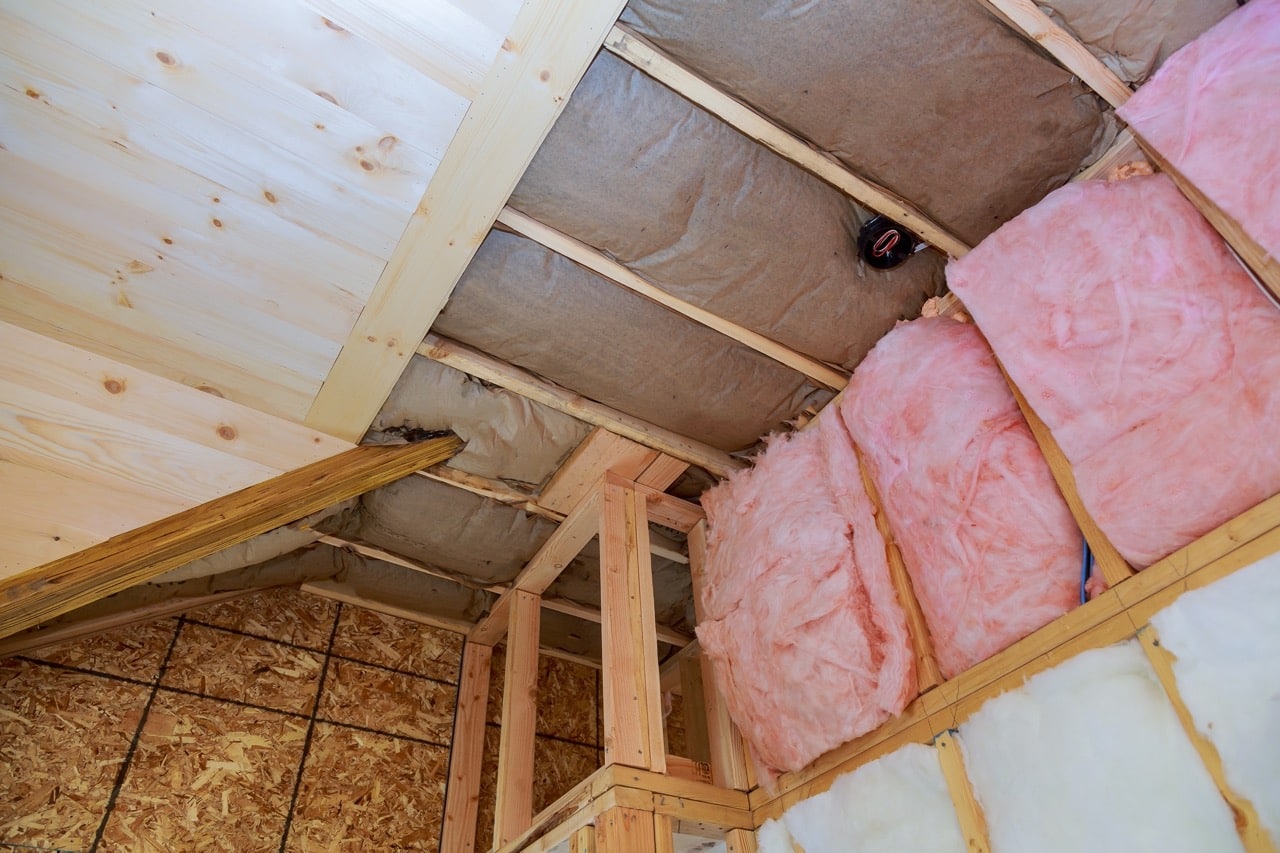08 Jun 2023
How to Correctly Insulate Your Loft
When it comes to energy efficiency and reducing heating costs, insulating your loft is one of the most effective steps you can take. Proper loft insulation helps retain heat within your home, prevents energy wastage, and contributes to a more comfortable living environment.

Introduction
When it comes to energy efficiency and reducing heating costs, insulating your loft is one of the most effective steps you can take. Proper loft insulation helps retain heat within your home, prevents energy wastage, and contributes to a more comfortable living environment.
In this article, we will explore the importance of loft insulation, different insulation products and types, the benefits it offers, and provide you with a complete step-by-step guide on how to correctly insulate your loft.
Why Loft Insulation is Important
Loft insulation is crucial for several reasons. Firstly, it acts as a barrier that prevents heat from escaping through the roof. Without proper insulation, a significant amount of heat can be lost, leading to increased energy consumption and higher utility bills.
Additionally, loft insulation also helps to regulate the temperature in your home, keeping the floors below it warm in winter and cool in summer.
Types of Loft Insulation – What Roofing supplies
There are various types of loft insulation available, including blanket insulation, loose-fill insulation, and rigid insulation boards. Blanket insulation is commonly used and consists of rolls or batts made from mineral wool or natural fibers.
Loose-fill or insulation board is made up of sheets of loose fibers or granules, often made from recycled materials. Rigid insulation boards are solid panels made from materials like foam or mineral wool.
Benefits of Proper Loft Insulation
Proper loft insulation offers numerous benefits. Firstly, it can significantly reduce energy consumption by preventing heat loss. This leads to lower heating bills and a smaller carbon footprint. Insulation also helps to improve the thermal comfort of your home by creating a more consistent temperature throughout.
Furthermore, a well-insulated shed roof or loft can help reduce noise transmission and minimize the risk of condensation and dampness.
Assessing Your Loft Insulation Needs
Before insulating your loft, it’s essential to assess your insulation needs. Begin by checking the current insulation levels in your loft. If there is existing insulation, determine its quality and thickness.
Insulation levels are typically measured in terms of its thermal resistance, known as the R-value. It’s important to ensure that your loft insulation meets the recommended minimum R-value for your region.
Preparing for Loft Insulation
Proper preparation is crucial for a successful loft insulation project. Start by clearing any clutter and removing any stored items from the loft area. This will provide easy access to all areas that require insulation.
Additionally, ensure that the loft is adequately ventilated to prevent moisture buildup. Address any existing issues, such as roof leaks or pest infestations, before proceeding with the insulation project.
DIY vs. Professional Installation
When it comes to loft insulation, you have the option to either do it yourself or hire a professional. DIY installation can be cost-effective, but it requires careful attention to detail and following the manufacturer’s instructions.
If you are not confident in your DIY skills or have a complex loft structure, it’s advisable to seek professional assistance. Professional installers have the knowledge and experience to ensure proper insulation installation.
Step-by-Step Guide to Insulating Your Loft
- Measure and calculate the required insulation materials based on the dimensions of your loft.
- Ensure you have the necessary safety equipment, such as gloves, goggles, and a dust mask.
- Start by insulating the loft hatch and any access points to prevent heat loss.
- Lay insulation material between the joists, ensuring a snug fit and avoiding any gaps.
- Install insulation material over the joists to achieve the desired thermal resistance.
- Pay attention to areas around pipes, wiring, and recessed light fixtures, ensuring they are properly insulated.
- Use insulating material to create a barrier around the perimeter of the loft, preventing heat from escaping.
- If using loose-fill insulation, distribute it evenly across the loft floor using a rake or similar tool.
- Ensure insulation does not block ventilation points or cover electrical cables.
- If necessary, insulate the water tank and pipes to prevent freezing during colder months.
Insulation Material Options
When it comes to choosing the right insulation material for your loft, consider factors such as thermal performance, cost, environmental impact, and ease of installation. Common materials include mineral wool, cellulose, fiberglass, and natural fibers like sheep’s wool.
Each material has its own advantages and considerations, so it’s important to select the one that best suits your needs and budget.
Installing Insulation
Proper installation of loft insulation is crucial to ensure its effectiveness. Follow the manufacturer’s instructions carefully, paying attention to recommended thicknesses, coverage, and any specific installation requirements.
If in doubt, consult with a professional or seek guidance from reputable sources.
Dealing with Obstacles and Challenges
During the insulation process, you may encounter obstacles or challenges such as pipes, electrical wiring, or recessed light fixtures. It’s important to address these carefully to ensure proper insulation without compromising safety.
Consider using specialized insulation materials and products or seeking professional advice if you’re unsure how to deal with specific obstacles.
Maintaining Your Loft Insulation
Maintaining your loft insulation is important to ensure its long-term effectiveness. Regularly check for any signs of damage, moisture, or mold growth. Address any issues promptly to prevent further damage and maintain the insulation’s thermal performance.
Additionally, periodically inspect the loft for pests and take appropriate measures to prevent infestations.
Common Mistakes to Avoid
To achieve optimal loft insulation, it’s essential to avoid common mistakes. Some common roofing pitfalls include insufficient insulation thickness, leaving gaps or voids, compressing insulation, and blocking ventilation. Take the time to understand the proper installation techniques and follow the guidelines to avoid these mistakes.
Reduce Your Energy Bills with a Well-Insulated Loft
Once you have successfully insulated your loft, there are plenty of additional steps you can take to maximize energy savings:
- Use energy-efficient lighting, such as LED bulbs.
- Seal any drafts around windows, doors, and electrical outlets.
- Optimize your thermostat settings for efficient heating and cooling.
- Consider installing a programmable or smart thermostat.
- Make sure your loft is adequately ventilated to prevent moisture buildup.
Conclusion
Insulating your loft is a practical and effective way to improve energy efficiency, reduce heating costs, save more and enhance the comfort of your home. By following the step-by-step guide and considering the tips provided in this article, you as homeowners can correctly insulate your loft, save more and reap the benefits of a well-insulated living space.
FAQs
- Does loft insulation really save money on energy bills?
Yes, loft insulation can significantly reduce heat loss, leading to lower energy consumption and cost savings on heating bills. - Can I install loft insulation myself, or should I hire a professional?
It depends on your DIY skills and the complexity of your loft structure. While DIY installation is possible, hiring a professional ensures proper insulation and minimizes the risk of errors. - How often should I check and maintain my loft insulation?
Regular inspections are recommended to identify any issues promptly. It’s best to check your loft insulation at least once a year for signs of damage, moisture, or pests. - Are there any government incentives or grants for loft insulation?
In some countries, there may be government schemes or grants available to encourage energy efficiency improvements, including loft insulation. Check with local authorities or energy agencies for more information. - Can loft insulation help with soundproofing?
Yes, loft insulation can provide some degree of soundproofing by reducing noise transmission from outside or between different areas within your home.


